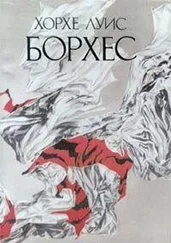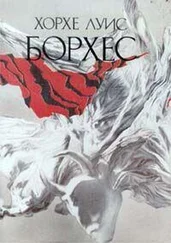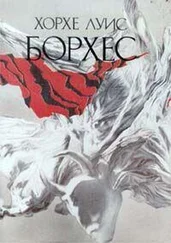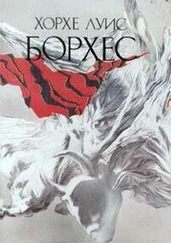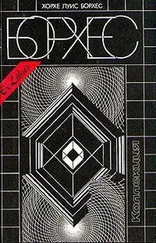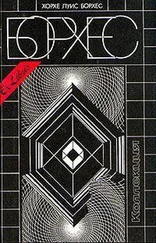Хорхе Борхес - Collected Fictions
Здесь есть возможность читать онлайн «Хорхе Борхес - Collected Fictions» весь текст электронной книги совершенно бесплатно (целиком полную версию без сокращений). В некоторых случаях можно слушать аудио, скачать через торрент в формате fb2 и присутствует краткое содержание. Год выпуска: 1999, ISBN: 1999, Издательство: Penguin (UK), Жанр: Старинная литература, на английском языке. Описание произведения, (предисловие) а так же отзывы посетителей доступны на портале библиотеки ЛибКат.
- Название:Collected Fictions
- Автор:
- Издательство:Penguin (UK)
- Жанр:
- Год:1999
- ISBN:9780140286809
- Рейтинг книги:5 / 5. Голосов: 1
-
Избранное:Добавить в избранное
- Отзывы:
-
Ваша оценка:
- 100
- 1
- 2
- 3
- 4
- 5
Collected Fictions: краткое содержание, описание и аннотация
Предлагаем к чтению аннотацию, описание, краткое содержание или предисловие (зависит от того, что написал сам автор книги «Collected Fictions»). Если вы не нашли необходимую информацию о книге — напишите в комментариях, мы постараемся отыскать её.
Collected Fictions — читать онлайн бесплатно полную книгу (весь текст) целиком
Ниже представлен текст книги, разбитый по страницам. Система сохранения места последней прочитанной страницы, позволяет с удобством читать онлайн бесплатно книгу «Collected Fictions», без необходимости каждый раз заново искать на чём Вы остановились. Поставьте закладку, и сможете в любой момент перейти на страницу, на которой закончили чтение.
Интервал:
Закладка:
The fame of the Prophet in the West is owed to Thomas Moore's garru-lous poem Lolla Rookh, awork laden with the Irish conspirator's sighs and longings for the East.
THE SCARLET DYE
In the year 120 of the Hegira, or 736 of the Christian era, there was born in Turkestan the man Hakim, whom the people of that time and that region were to call The Veiled. His birthplace was the ancient city of Merv, whose gardens and vineyards and lawns look out sadly onto the desert. Noontime there, when not obscured by choking clouds of sand that leave a film of whitish dust on the black clusters of the grapes, is white and dazzling.
Hakim was raised in that wearied city. We know that one of his father's brothers trained him as a dyer—the craft, known to be a refuge for infidels and impostors and inconstant men, which inspired the first anathemas of his extravagant career. My face is of gold, a famous page of the Annihilation says, but I have steeped the purple dye and on the second night have plunged the uncarded wool into it, and on the third night have saturated the prepared wool, and the emperors of the islands still contend for that bloody cloth. Thus did I sin in the years of my youth, deforming the true colors of the creatures. The Angel would tell me that lambs were not the color of tigers, while Satan would say to me that the All-Powerful One desired that they be, and in that pursuit he employed my cunning and my dye. Now I know that neither the Angel nor Satan spoke the truth, for I know that all color is abominable.
In the year 146 of the Hegira, Hakim disappeared from his native city. The vats and barrels in which he had immersed the cloth were broken, as were a scimitar from Shiraz and a brass mirror.
THE BULL
At the end of the moon of Sha'ban in the year 158, the air of the desert was very clear, and a group of men were looking toward the west in expectation of the moon of Ramadan, which inspires fasting and mortification. They were slaves, beggars, horse sellers, camel thieves, and butchers. Sitting gravely on the ground before the gate of an inn at which caravans stopped on the road to Merv, they awaited the sign. They looked at the setting sun, and the color of the setting sun was the color of the sand.
From far out on the dizzying desert (whose sun gives men fever and whose moon brings on convulsions), they saw three figures, apparently of immense height, coming toward them. The three figures were human, but the one in the center possessed the head of a bull. As these figures came closer, the man in the center was seen to be wearing a mask, while the two men that accompanied him were blind.
Someone (as in the tales of the Thousand and One Nights) asked the reason for this wonder. They are blind, the masked man said, because they have looked upon my face.
THE LEOPARD
The historian of the Abbasids relates that the man from the desert (whose voice was extraordinarily sweet, or so, in contrast to the harshness of the mask, it seemed to be) told the men that though they were awaiting the sign of a month of penitence, he would be for them a greater sign: the sign of an entire life of penitence, and a calumniated death. He told them that he was Hakim, son of Ozman, and that in the year 146 of the Flight a man had entered his house and after purifying himself and praying had cut his, Hakim's, head off with a scimitar and taken it up to the heavens. Borne in the right hand of this visitor (who was the angel Gabriel), his head had been taken before the Almighty, who had bade him prophesy, entrusting him with words of such antiquity that speaking them burned one's mouth and endowed one with such glorious resplendence that mortal eyes could not bear to look upon it. That was the reason for his mask. When every man on earth professed the new law, the Visage would be unveiled to them, and they would be able to worship it without danger—as the angels did already. His message delivered, Hakim exhorted the men to jihad —a holy war—and the martyrdom that accompanied it.
The slaves, beggars, horse sellers, camel thieves, and butchers denied him their belief—one voice cried sorcerer, another, impostor.
Someone had brought a leopard—perhaps a member of that lithe and bloodthirsty breed trained by Persian huntsmen. At any rate, it broke free of its cage. Save for the masked Prophet and his two acolytes, all the men there trampled one another in their haste to flee. When they returned, the beast was blind. In the presence of those luminous, dead eyes, the men worshiped Hakim and admitted his supernatural estate.
THE VEILED PROPHET
The official historian of the Abbasids narrates with no great enthusiasm the inroads made by Hakim the Veiled in Khorasan. That province—greatly moved by the misfortune and crucifixion of its most famous leader— embraced with desperate fervor the doctrine offered by the Shining Visage and offered up to him its blood and gold. (Hakim by now had exchanged his harsh mask for a fourfold veil of white silk embroidered with precious stones. Black was the symbolic color of the caliphs of the House of Abbas; Hakim chose the color white—the most distant from it—for his shielding Veil, his banners, and his turbans.) The campaign began well. It is true that in the Book of Precision it is the caliph's pennants that are victorious every-where, but since the most frequent result of those victories is the stripping of the generals of their rank and the abandonment of impregnable castles, it is not difficult for the sagacious reader to read between the lines. Toward the end of the moon of Rajab in the year 161, the famous city of Nishapur opened its iron gates to the Masked One; in early 162, the city of Astarabad did likewise. Hakim's military operations (like those of another, more fortunate Prophet) were limited to his tenor chanting of prayers offered up to the Deity from the hump of a reddish-colored camel in the chaotic heart of battle. Arrows would whistle all around him, yet he was never wounded. He seemed to seek out danger—the night a band of loathsome lepers surrounded his palace, he had them brought to him, he kissed them, and he made them gifts of gold and silver.
The Prophet delegated the wearying details of governing to six or seven adepts. He was a scholar of meditation and of peace—a harem of 114 blind wives attempted to satisfy the needs of his divine body.
ABOMINABLE MIRRORS
So long as their words do not altogether contravene orthodox belief, confidential friends of God are tolerated by Islam, however indiscreet or threatening to that religion they may be. The Prophet would perhaps not have spurned the advantages of that neglect, but his followers, his victories, and the public wrath of the caliph—whose name was Muhammadal-Mahd1— forced him into heresy. It was that dissent that ruined him, though first it led him to set down the articles of a personal religion (a personal religion that bore the clear influence of gnostic forebears).
In the beginning of Hakim's cosmogony there was a spectral god, a deity as majestically devoid of origins as of name and face. This deity was an immutable god, but its image threw nine shadows; these, condescending to action, endowed and ruled over a first heaven. From that first demiurgic crown there came a second, with its own angels, powers, and thrones, and these in turn founded another, lower heaven, which was the symmetrical duplicate of the first. This second conclave was reproduced in a third, and the third in an-other, lower conclave, and so on, to the number of 999. The lord of the nethermost heaven—the shadow of shadows of yet other shadows—is He who reigns over us, and His fraction of divinity tends to zero.
Читать дальшеИнтервал:
Закладка:
Похожие книги на «Collected Fictions»
Представляем Вашему вниманию похожие книги на «Collected Fictions» списком для выбора. Мы отобрали схожую по названию и смыслу литературу в надежде предоставить читателям больше вариантов отыскать новые, интересные, ещё непрочитанные произведения.
Обсуждение, отзывы о книге «Collected Fictions» и просто собственные мнения читателей. Оставьте ваши комментарии, напишите, что Вы думаете о произведении, его смысле или главных героях. Укажите что конкретно понравилось, а что нет, и почему Вы так считаете.

